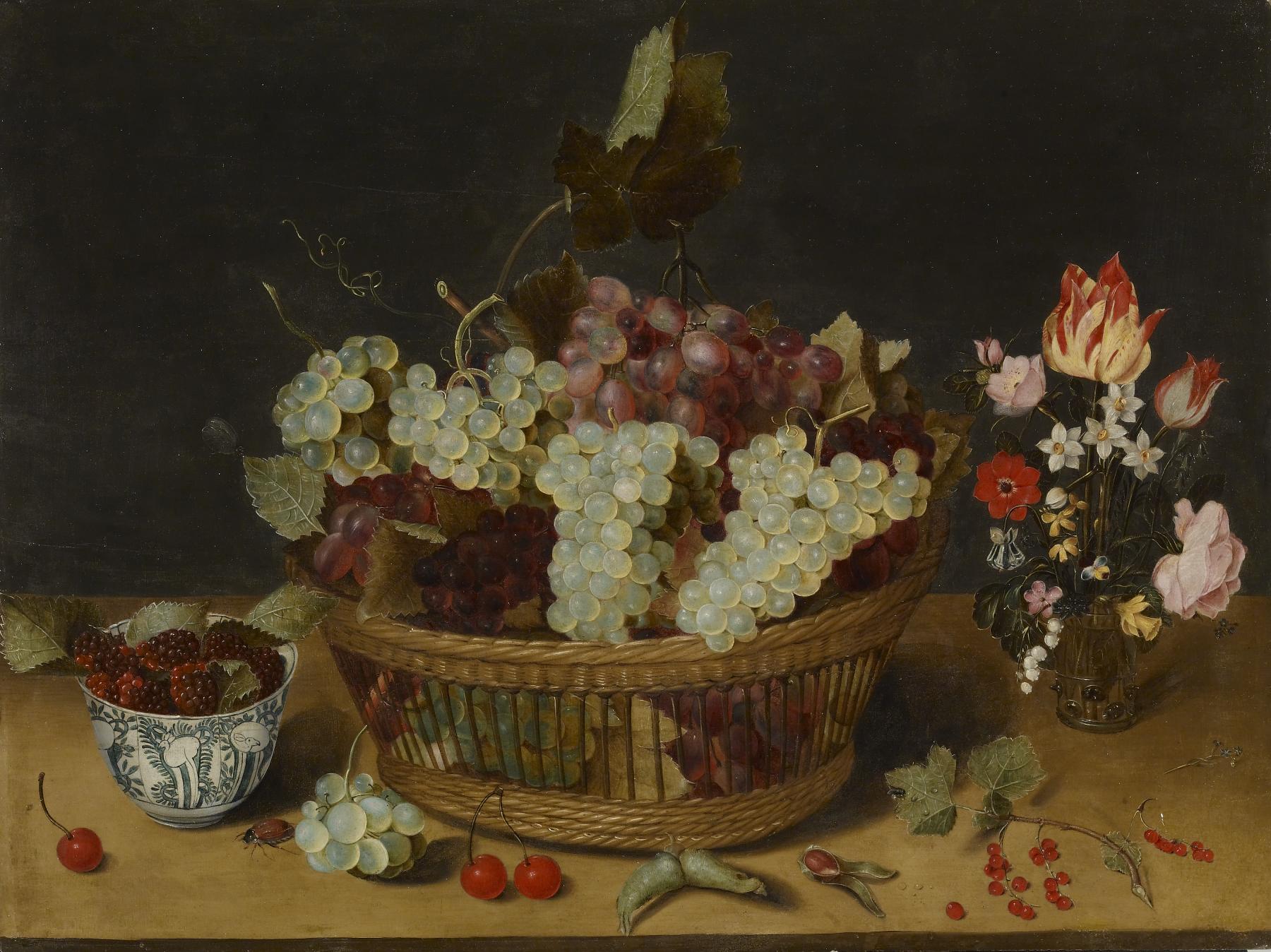Still Life with Chinese Bowl and Vase of Flowers
(Baroque Europe )
Soreau, the son of an Antwerp painter in Frankfurt, specialized in "table-top still lifes," featuring fruits, flowers, and insects depicted in ways that appeal to the senses. For example, the sheen on the grapes and color of the mulberries suggest their flavor, while the delicacy of the Chinese porcelain bowl, paired with the glass beaker with tulips, lilies of the valley, and other flowers, appeals to sight and touch.
Porcelains made during the reign of the Chinese emperor Wan Li (1572-1619)-the same type bowl as on the bracket above-were appreciated as marvels of Chinese ingenuity. However, the bulbs that produced the tulips at the right were more valuable. Introduced from Turkey a few decades earlier, tulips, especially striped ones, could, in these years, cost as much a farm.
Provenance
Provenance (from the French provenir, 'to come from/forth') is the chronology of the ownership, custody, or location of a historical object. Learn more about provenance at the Walters.
Don Marcello Massarenti Collection, Rome; Henry Walters, Baltimore, 1902, by purchase; Walters Art Museum, 1931, by bequest.
Exhibitions
| 1971-1972 | World of Wonder. The Walters Art Gallery, Baltimore. |
Geographies
Germany, Frankfurt (Place of Origin)
Measurements
19 3/16 x 25 9/16 in. (48.8 x 64.9 cm)
Credit Line
Acquired by Henry Walters with the Massarenti Collection, 1902
Location in Museum
Accession Number
In libraries, galleries, museums, and archives, an accession number is a unique identifier assigned to each object in the collection.
In libraries, galleries, museums, and archives, an accession number is a unique identifier assigned to each object in the collection.
37.1902




